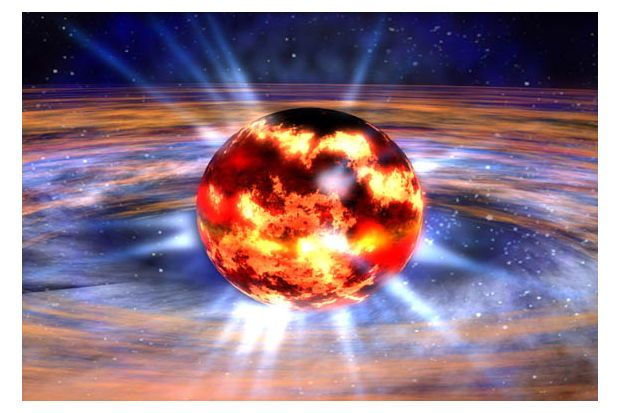| Authors | S. A. Ghaemmaghami and M. Ghazanfari Mojarrad |
|---|---|
| Journal | Physical Review D |
| Page number | 23026 |
| Volume number | 111 |
| IF | ثبت نشده |
| Paper Type | Full Paper |
| Published At | 2025-01-13 |
| Journal Grade | Scientific - research |
| Journal Type | Electronic |
| Journal Country | Iran, Islamic Republic Of |
| Journal Index | JCR ,SCOPUS |
Abstract
Due to the lack of a universally accepted model for determining the structure and composition of a hot hybrid neutron star (HHNS), continuous efforts are being made to improve the existing models. Thus, in this study, we set out to model HHNSs by utilizing a statistical model based on Thomas-Fermi approximation for baryonic matter, and the Polyakov-Nambu-Jona-Lasino model for quark matter to describe the baryon-quark phase transition using the Maxwell construction for neutrino-free matter and neutrino-trapped matter under the beta equilibrium conditions, while adopting the isothermal (isentropic) equation of state (EOS) of baryonic matter with the interactions MS96 and MS90, and the one of quark matter where the quark vector interactions are included. According to our research findings, besides the repulsive effects arising from the baryonic interactions in phase space, and the quark vector couplings, it is concluded that the temperature and neutrino trapping significantly affect the stiffness of the hot hybrid EOS. Within the isentropic picture, the EOS of neutrino-free matter turns out to be more sensitive to the value of the entropy per baryon than that of neutrino-trapped matter. Additionally, with an increase in entropy per baryon, the HHNS structures with larger gravitational (baryonic) masses are allowed, while the ones with smaller radii are excluded. Most importantly, our calculations show that the possibility of obtaining a stable mass structure of HHNSs cannot be excluded under the conditions of quark vector interaction and neutrino trapping.

